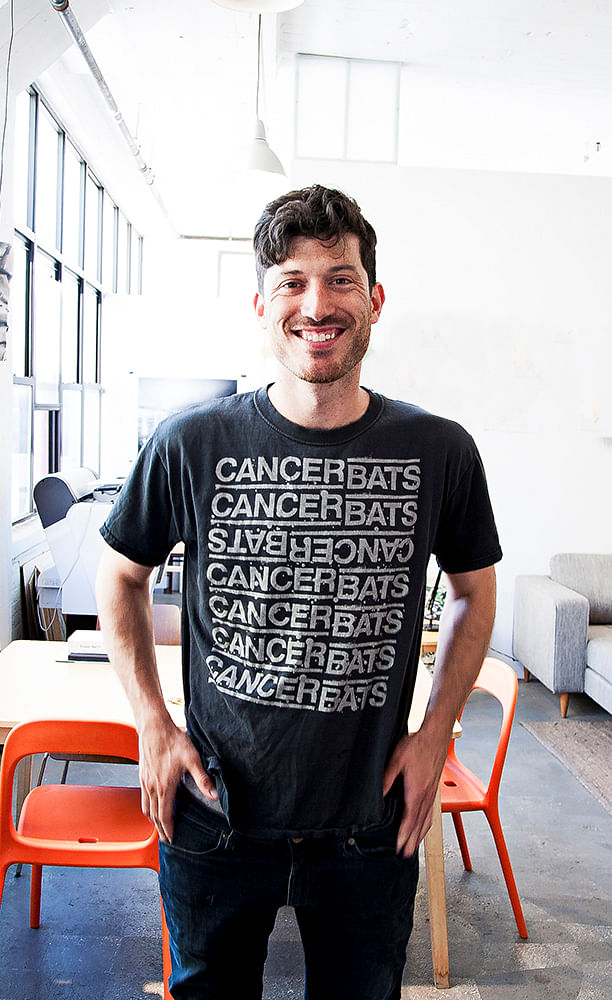

L/AND/A (short for Light and Air Architecture), is an Brooklyn-based practice run by Shane Neufeld. An artist, writer, and an architect, Neufeld studied painting and literature before getting his Master's from the Yale School of Architecture. Founded in 2017, L/AND/A was Neufeld's opportunity to explore the intersections between the worlds of art and architecture. For this week's Small Studio Snapshot, we talk with him about the relationship between the two and his transition from one into the other.
How many people are in your practice?
Currently there is only myself.
Why were you originally motivated to start your own practice?
I come to architecture through art. My whole life I have been a painter and I never felt that my interests entirely aligned with the architectural community around me. Starting my own practice was an opportunity to explore ideas and problems informed by both architecture and art. I wanted to move back and forth between the two worlds more freely and not necessarily situate myself in one or the other. The Switchback House is an expression of this combination. The varied and multiple sightlines suggest an experience not unlike that found in painting, where one can exploit foreground, middleground and background to orchestrate visual pathways through the work. There is a sustained effort to frame the outside world through layers of space that suggest a heightened sense of drama and depth.
What led you to transition from art into architecture?
I have a more personal relationship to art than I do to architecture. As a result, I tend to be less flexible creatively because I continue to maintain intensely subjective opinions (even though I’ve tried to do away with them!). The opposite is true for architecture, which I came to after my undergraduate education. I feel considerably more open minded towards design, and am not nearly as deterministic about what makes a project successful or meaningful. My creativity didn’t feel limited by my own personal set of values. The outcomes are consistently more open ended and satisfying.
What hurdles have you come across?
There are obvious concerns, like, how to get work. Conceptually, the most important hurdle for me is finding a way to combine my varied interests into a cohesive project that continues to evolve creatively. The nuances between artistic and architectural disciplines fascinates me. What I have found interesting about this model is that although on the face of it art and architecture have a lot in common, as processes, they are often diametrically opposed. As a painter, my process is additive. Starting with a literal tabula rasa and evolving complexity from simplicity. As an architect, I work backwards, employing a strategy that mirrors the painter’s: evolving from complexity to simplicity. I’m interested in what the overlap of these two worlds is, and how it can produce work that performs as architecture, but simultaneously suggests broader meaning as well.
Is scaling up a goal or would you like to maintain the size of your practice?
Scaling up is my only choice. Currently, I do not have a vision for what my practice will look like in the future, but I respect and love collaboration and feel strongly that working with others creatively is a superior strategy. My hope is to operate independently but participate with other firms at times as a collective. I think it’s a mistake for so many young firms to compete. We all would be better off sharing the load.
I think it’s a mistake for so many young firms to compete. We all would be better off sharing the load.
Obviously I don’t have the bandwidth to absorb large projects or multiple jobs at a given time. So, collaboration is a necessity rather than a choice. Collaboration affords the opportunity to work with people outside of the discipline, layering fundamentally different perspectives into the iterative design process
Dividing up work, for the most part comes naturally. I’ve teamed up with Future Expansion Architects several times. One project in particular was an RFP for Brooklyn Bridge Park’s Pier 6, Our stepped housing scheme evolved considerably throughout the design process and we ended up with a proposal that neither of us would ever have conceived of alone. I’ve also collaborated with photographer, Kevin Kunstadt, a close friend who’s interest in optics and photography have resulted in projects that explore diverse approaches to vision and our perceptual experience with the world.
What are the benefits of having your own practice? And staying small?
I enjoy the responsibility and ownership that comes with having your own firm. Everything matters more.
No Comments
Block this user
Are you sure you want to block this user and hide all related comments throughout the site?
Archinect
This is your first comment on Archinect. Your comment will be visible once approved.